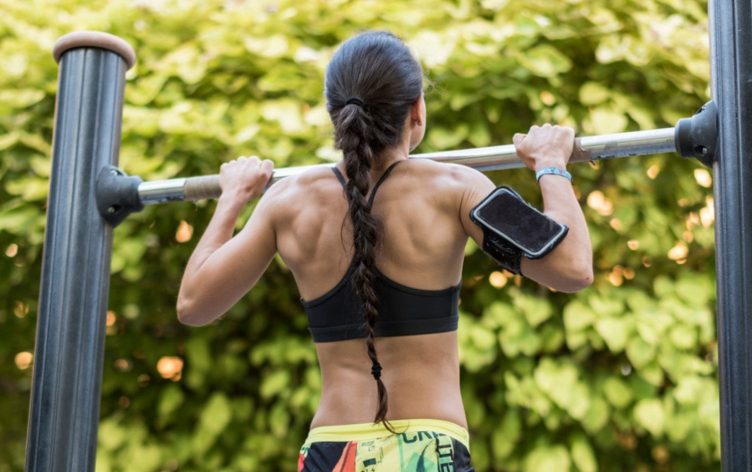Strengthening and stretching exercises for the lower back can help stabilize the lower spine and support the upper body. Examples include the plank and knee-to-chest stretches. A lower back workout may also help reduce and prevent pain.

Stretching the back muscles after completing a back-strengthening routine can help prevent muscle soreness and injury. It may also provide additional benefits, such as improving range of motion and flexibility.
This article outlines strengthening and stretching exercises for the lower back. Together, these may help people minimize and manage lower back pain.
Strengthening exercises
The following exercises can help strengthen, stabilize, and support the lower back. The North American Spine Society notes that a person should stop performing a back exercise if it leads to acute or increased back pain.
Glute bridge
The glute bridge works a person’s gluteus maximus, the largest of the gluteal muscles, or glutes, that form the buttocks. This muscle engages when a person extends their hips, such as when they stand up out of a squat. It also helps with both external rotation, which is when the knee and hip open away from the body, and abduction, which is when the leg lifts away from the body.
According to a 2019 reviewTrusted Source, researchers have linked weak gluteus maximus muscles to lower back pain. Strengthening these muscles may help prevent this symptom.
The glutes help stabilize the lower back by acting as both a stabilizer and a mobilizer. Strong glutes can stabilize and support the lower back and hips, and they can also help stabilize the knees when they are extended.
To perform a glute bridge, a person should follow these steps:
- Step 1: Lie on the back with the knees bent and the feet flat on the floor, hip-width apart. Place the arms down by the sides of the body with the palms of the hands facing upward.
- Step 2: Tighten the abdominal muscles and squeeze the gluteal muscles.
- Step 3: Lift the pelvis off the floor. Continue to lift so that the body forms a straight line through the shoulder, hip, and knee.
- Step 4: Hold the position for at least 2 seconds.
- Step 5: Slowly return to the start position.
- Step 6: Repeat the steps above 10–15 times.
Bird-dog
The bird-dog works the gluteal muscles. It also exercises the back extensor muscles, which attach to the back of the spine and allow a person to stand, bend, and lift objects.
To perform the bird-dog exercise, a person should follow these steps:
- Step 1: Begin the exercise on the hands and knees with the shoulders directly over the hands and the hips directly over the knees.
- Step 2: Tense the abdominal muscles and stretch the right arm straight out in front of the body.
- Step 3: Hold the position while staying balanced.
- Step 4: Slowly lift the left leg and extend it straight out behind the body.
- Step 5: Hold the position for 15 seconds.
- Step 6: Slowly return to the starting position and repeat on the opposite side.
- Step 7: Repeat 5 times.
Plank
The plank exercise primarily works the abdominals, but it also engages the arms, shoulders, hip flexors, and feet, making it a good full-body stability exercise. This position may also activate the back extensor muscles and the quadratus lumborum, which is the deepest back muscle. It extends from the lowest rib to the pelvic bone.
A person can perform a plank by following the steps below:
- Step 1: Lie on the stomach with the forearms against the floor and the elbows directly in line with the shoulders.
- Step 2: Tighten the abdominal and gluteal muscles.
- Step 3: Lift the hips and both knees off the floor.
- Step 4: Hold the position for 10–30 seconds without allowing the pelvis to sag toward the floor.
- Step 5: Slowly return to the start position and then repeat 5 times.
Modification: A person can make the exercise less challenging by bending the knees slightly and keeping them on the ground. They should focus on maintaining a straight line from the knees to the shoulders.
Side plank
The side plank is a modified version of the plank that works the quadratus lumborum as well as the gluteus medius and tensor fascia lata (TFL). These muscles are important for hip stability.
A side plank involves the following steps:
- Step 1: Lie on the right side of the body with the right leg slightly bent and the left leg straight with the foot on the floor. Ensure that the right arm is directly beneath the right shoulder with the forearm extended out in front.
- Step 2: Tightening the abdominal muscles, lift the right hip off the floor.
- Step 3: Lift the right knee off the floor to straighten the right leg and stack the feet on top of each other.
- Step 4: Keeping the body straight, hold the position for 10–30 seconds.
- Step 5: Slowly return to the start position and repeat on the other side.
- Step 6: Repeat the steps above 5 times.
Modification: Anyone who finds this exercise too difficult can keep the bottom knee slightly bent and on the ground.
Abdominal drawing-in maneuver
Strong abdominal muscles help support the spine and keep the hips properly aligned. Weak abdominal muscles can result in poor core strength, which can causeTrusted Source lower back pain.
The transversus abdominis (TA) is a deep abdominal muscle that helps stabilizeTrusted Source the spine. The abdominal drawing-in maneuver (ADIM) is an exercise that can help strengthen the TA.
To perform the ADIMTrusted Source, a person should follow these steps:
- Step 1: Lie on the back with the knees bent and the arms down by the sides of the body.
- Step 2: Keep the spine in a neutral position and pull the bellybutton toward the spine.
- Step 3: Inhale.
- Step 4: Exhale while tightening the abdominal muscles, drawing the bellybutton toward the spine.
- Step 5: Hold the position for 10 seconds, and then release. Rest for 15 seconds.
- Step 6: Repeat 10 times.
Abdominal crunches
Abdominal crunches help develop a strong core that provides better spinal support and hip alignment.
Abdominal crunches involve the following series of movements:
- Step 1: Lie with the back flat against the floor, the knees bent, and the feet flat and hip-width apart.
- Step 2: Cross the hands over the chest or reach along the sides of the body toward the feet.
- Step 3: Tighten the abdominal muscles and lift the head and shoulder blades off the floor while exhaling.
- Step 4: Lower to the starting position.
- Step 5: Repeat the above exercise 10–15 times.
Stretching exercises
According to the American Academy of Orthopaedic Surgeons, a person should follow their back strengthening exercises with back stretching exercises. This approach helps restore range of motion and flexibility while preventing muscle soreness and injury.
Below are some lower back stretching exercises that people can incorporate into their daily routine.
Knee-to-chest stretches
Knee-to-chest stretches can help elongate the lower back muscles, relieving tension and pain.
A person can perform the knee-to-chest stretch as follows:
- Step 1: Lie on the back with both legs flat against the floor.
- Step 2: Lift the right leg, bending the knee toward the chest.
- Step 3: Use both hands to pull the right knee toward the chest.
- Step 4: Hold the right knee against the chest for several seconds.
- Step 5: Return to the starting position.
- Step 6: Repeat with the left leg and then return to the starting position.
Kneeling back stretch
The kneeling back extension can help stretch the lower back muscles, easing pain and tension in these areas.
To perform the kneeling back stretch, a person can follow these steps:
- Step 1: Begin the exercise on the hands and knees, positioning the knees hip-width apart, with the shoulders directly over the hands.
- Step 2: Round the back, pulling the bellybutton up toward the spine and tilting the lower back toward the floor.
- Step 3: Hold the position for 5 seconds.
- Step 4: Rock gently backward, lowering the buttocks as close as possible to the heels. Ensure that the arms are stretched out in front.
- Step 5: Hold the position for 5 seconds.
- Step 6: Rock gently back up to the starting position. Repeat 10–15 times.
Modified seated side straddle
The seated side straddle exercise stretches the hamstring, the abductors, and the extensor muscles in the middle and lower back. The seated side straddle requires a person to follow these steps:
- Step 1: Sit with both legs flat against the floor and extended out in front of the body. The feet should be far enough apart that the legs form a “V” shape.
- Step 2: Bend the left leg, bringing the left foot up to touch the right knee and letting the left knee fall out away from the body.
- Step 3: Keeping the back straight, bend from the hips and reach forward toward the toes of the right foot.
- Step 4: Slowly round the spine, bringing the hands toward the right ankle or shin while lowering the head as close as possible to the right knee.
- Step 5: Hold the position for 30 seconds, then relax for 30 seconds. Repeat on the other side.
- Step 6: Perform 5–6 repetitions.
Summary
Together, lower back strengthening and stretching exercises can help improve the strength, stability, and flexibility of the lower back. In doing so, they may help alleviate and prevent lower back pain.
If any of the back exercises above make back pain worse, it is vital to stop doing them immediately and contact a doctor.
The articles on this website are for reference only and do not replace medical diagnosis or treatment. Please do not follow them on your own
Make a question

If you have any questions, please contact us via contact information, or fill in the form below.
Schedule a consultation appointment with the doctor
Before you leave, leave your information so we can send you medical news that may be of interest to you..

The doctor does not have an appointment scheduled, please choose another day

Note: The appointment time is only approximate, T-Matsouka will contact to confirm with customers after receiving the examination schedule information. Thank you for waiting for a response from T-Matsuoka.






Star rating:
Sort by :
No reviews yet.